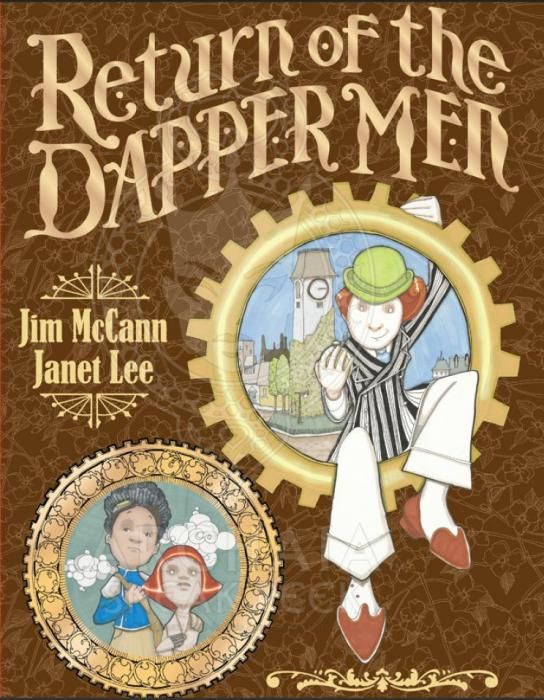I once read that Salvador Dali used to keep a notebook (or perhaps it was a sketchbook or a journal) on his nightstand to transcribe his dreams upon awakening. While I've never seen what was in said notebook, I have to imagine it would not be unlike what appears in these pages. More than one of Dali's paintings call upon the order of clockworks and then proceed to plunge the order into chaos. Of course Dali doesn't stop at watches, but that, certainly, is where Jim McCann's and Janet Lee's story begins.
As I opened the book, I found the pages without words to be the most breathtaking, but those with words are smartly designed to accommodate the printed story. As a student of graphic design, I have no doubt that this book will be admired in "How" and "Print" if it hasn't already been covered there. The balance between image and text - even when one supersedes the other - is smart and crafty here.
This is the story of Anorev, a place where time, and most everything else, had left behind children and robots. The protagonist of the story is Ayden - a boy who asks "questions which have slept so long in the mind that the answers escaped, scurrying away to be found again" - and his clockwork friend, Zoe. Zoe doesn't have much to say, but that doesn't mean that Ayden doesn't listen to her.
In the end, like most stories, this is a tale of morality, with several morals on play at the same time. The result is a collision of destiny and choice symbolized by the boy and his robot friend. Which is free will and which prescribed destiny? That would be telling.
"Return of the Dapper Men" was hyped up as "a world where J.M. Barrie, Lewis Carroll and Maurice Sendak meet Jim Henson and Tim Burton." There are bits of "Peter Pan" and "Alice in Wonderland," but there's also "Willy Wonka," "Edward Scissorhands," and "Yellow Submarine." This book is everything the hype promised it would be and yet it isn't any of those things. I certainly have a different set of reference points to draw from than McCann or Lee, but the story traverses those spans. This book is R.C. Anderson's schema theory set ablaze and left upon the landscape of the "Persistence of Memory."
Wipe the credits from this book and I would never be able to tell you that this book is scripted by the same man that writes "Hawkeye & Mockingbird." That's not a slight to McCann's work elsewhere, but rather testimony to the versatility that McCann possesses and plays up with great ability. Ayden is every bit the hero you want to cheer on and his quest is an uncommon one, but one that McCann delivers with deftness and charm.
Janet Lee's artwork (which my design-inclined thirteen-year-old describes as "crazy cool") is stunning in its simplicity. The pages defy description, but in trying the best I can conjure is that perhaps Lee is the lovechild of Richard Scarry, Jim Steranko and Dave McKean. That, to me, is the most accurate and most complete way to relate the images that comprise this book. Lee shared some insight into her process and progress with Robot 6's Tim O'Shea. Between that discussion, the book itself, and the behind the scenes peek at the end of the book, this book becomes more impressive in its reality and consistency. Five stars does not do this book much in the way of true justice.
The "Making of a Dapper Page" process pages at the end of the book, combined with the collection of stunning pinups would be worth the price of this book all by themselves. Look at it how you will: a mind-opening, eye-shutting book that sings to your dreams and dreams of your songs with a bonus section of extras or an odd collection of bonuses with a stirring tale preceding them. Either way, this is one book that I'll be grabbing off the shelves every so often just to marvel at and to remind myself of everything comics can be.

